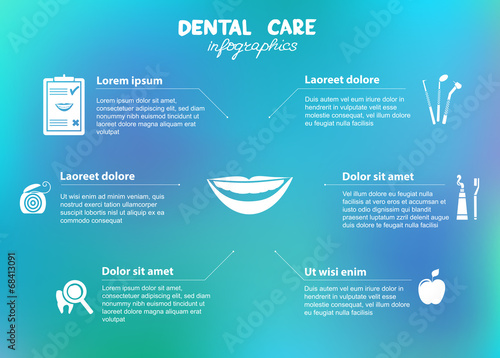The Following Era Of Dental Surgery: Advancement Innovations And Dopes Improving The Specialty
The Following Era Of Dental Surgery: Advancement Innovations And Dopes Improving The Specialty
Blog Article
Short Article By-Foldager Schultz
Welcome to the globe of dental surgery, where innovations and developments are forming the future of the area! In this exciting realm, you'll witness the transformative power of robotics, the advanced marvel of 3D printing, and the game-changing impact of minimally invasive techniques.
The future of oral surgery holds a pledge of precision, efficiency, and improved patient results. With the help of advanced robotics, surgeons have the ability to carry out complicated procedures with greater accuracy and control.
3D printing technology is transforming the creation of dental implants and prosthetics, offering personalized remedies that fit perfectly into each client's special anatomy.
Furthermore, minimally invasive methods are lowering post-operative pain and recovery time, permitting individuals to return to their day-to-days live quicker.
Prepare to discover the exciting innovations and advances that are improving the landscape of dental surgery!
Improvements in Robotics
One significant improvement in dental surgery is making use of robotic innovation, which enables exact and efficient operations. With the help of robotic systems, dental specialists have the capability to do intricate surgical procedures with boosted precision, minimizing the danger of human error.
These robotic systems are outfitted with innovative imaging modern technology and accurate instruments that make it possible for doctors to browse through detailed anatomical structures with ease. By making cosmetic dentistry cedar park of robotic modern technology, doctors can achieve greater medical accuracy, resulting in improved individual end results and faster healing times.
In addition, the use of robotics in oral surgery permits minimally intrusive treatments, minimizing the trauma to surrounding tissues and promoting faster recovery.
3D Printing in Oral Surgery
To enhance the field of oral surgery, you can explore the subtopic of 3D printing in dental surgery. This cutting-edge modern technology has the prospective to transform the method oral doctors run and deal with clients. Here are 4 essential methods which 3D printing is forming the field:
- ** Custom-made Surgical Guides **: 3D printing permits the production of highly exact and patient-specific medical guides, boosting the precision and performance of procedures.
- ** Implant Prosthetics **: With 3D printing, oral surgeons can develop tailored dental implant prosthetics that flawlessly fit a client's distinct anatomy, causing better results and person fulfillment.
- ** Bone Grafting **: 3D printing enables https://raymondpkeyr.activoblog.com/35280364/prepare-yourself-for-your-oral-implant-assessment-with-our-necessary-list-find-what-to-get-ready-for-a-successful-conversation-with-your-dental-professional manufacturing of patient-specific bone grafts, lowering the need for conventional implanting strategies and enhancing recovery and recovery time.
- ** Education and Educating **: 3D printing can be made use of to produce sensible surgical models for academic purposes, allowing oral specialists to exercise complicated treatments prior to performing them on people.
With its potential to improve precision, modification, and training, 3D printing is an interesting development in the field of dental surgery.
Minimally Intrusive Methods
To better progress the area of dental surgery, welcome the possibility of minimally invasive methods that can greatly profit both doctors and individuals alike.
Minimally invasive methods are reinventing the field by reducing medical trauma, minimizing post-operative discomfort, and accelerating the healing process. These techniques entail making use of smaller incisions and specialized tools to carry out treatments with accuracy and efficiency.
By using advanced imaging modern technology, such as cone light beam calculated tomography (CBCT), specialists can precisely prepare and carry out surgeries with very little invasiveness.
Additionally, making Related Web Page of lasers in dental surgery allows for accurate tissue cutting and coagulation, leading to decreased blood loss and reduced healing time.
With minimally invasive techniques, people can experience faster recuperation, minimized scarring, and enhanced outcomes, making it a crucial element of the future of dental surgery.
Verdict
So, as you can see, the future of dental surgery is unbelievably appealing, with exciting developments and breakthroughs shaping the field.
From the advancements in robotics to making use of 3D printing and minimally intrusive strategies, oral doctors are revolutionizing the means they give treatment.
While some may fret about the potential price associated with these advancements, it is necessary to keep in mind that these modern technologies inevitably boost individual end results and decrease healing time, making them well worth the financial investment in the future.
